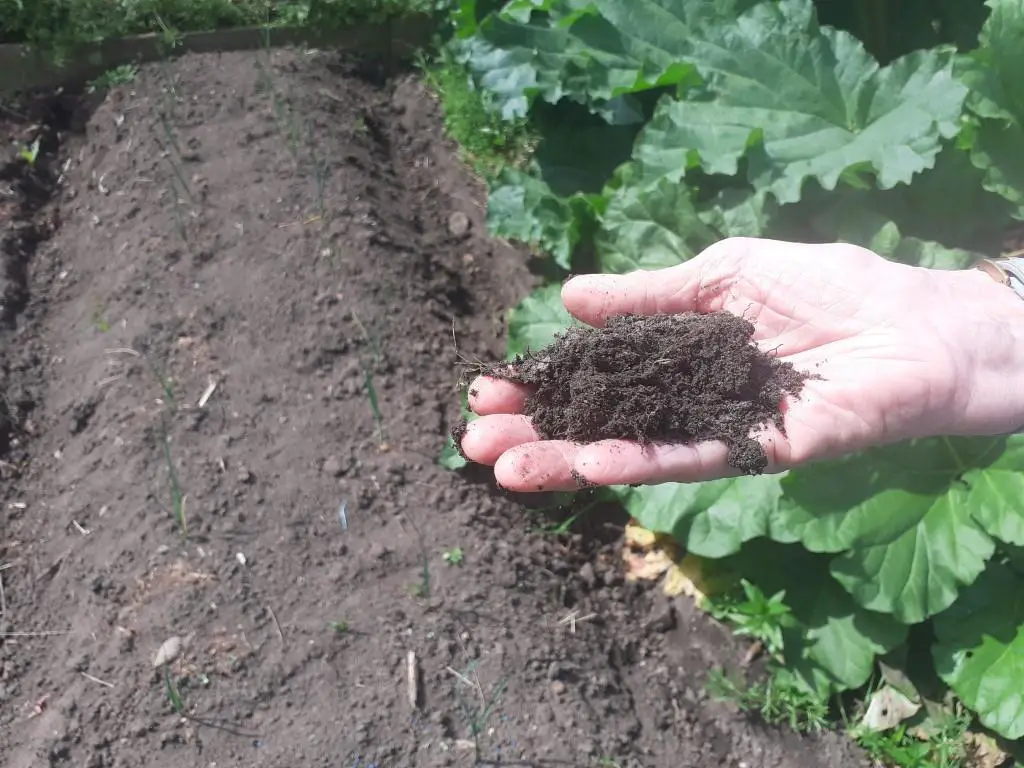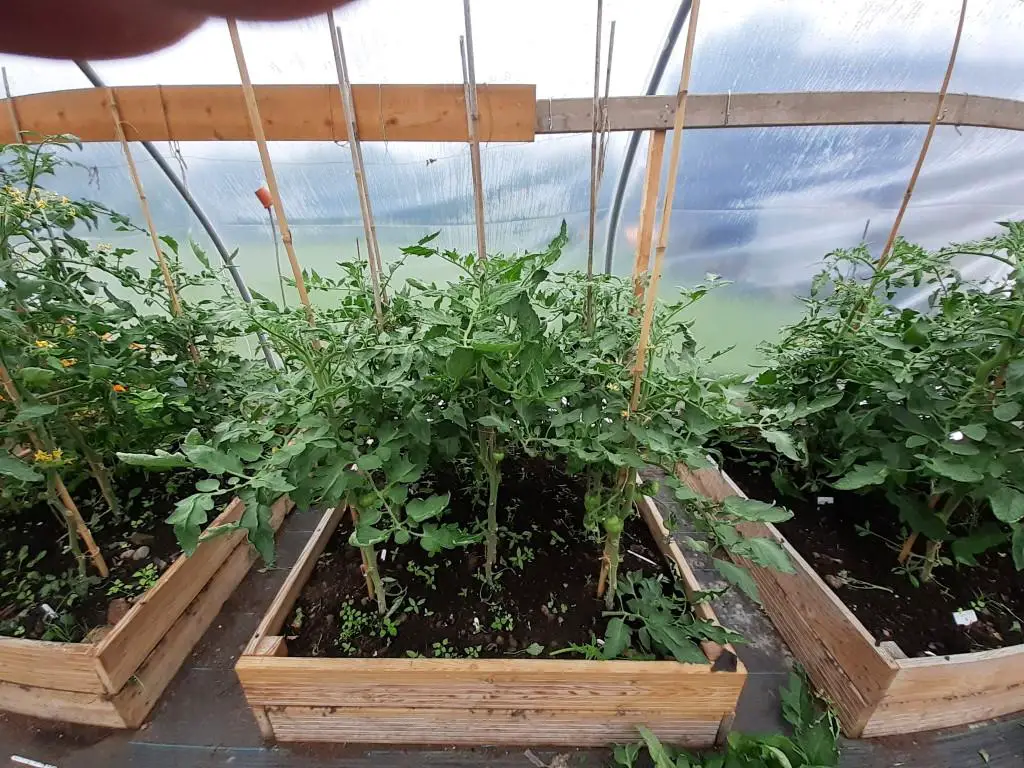There’s no doubt about it – The interest in vegetable gardening or growing your own food has taken on a whole new momentum since the global rise in food prices, and rightly so in my opinion.
Besides the rising cost of fresh foods in general however, there are other important benefits to be had from ‘growing your own’ and getting your hands dirty!
We look at these other benefits a little later in this post, but to answer the initial question and the main subject of this post, we must firstly look at the most common types of soil available to gardeners.
Without doubt, the best soil for growing most vegetables is ‘Loamy’ soil, rich in compost and organic material, medium draining that will retain nutrients and water. Friable and loose to handle, allowing for good root growth.
However for a list of the 6 common soil types and their benefits check out below…
- Sandy soil: Sandy or ‘gritty’ soil free-flowing. Does not retain moisture for long periods. Prone to drying out quickly, but good for growing deep tap-root crops like carrots, potatoes, or parsnips. Easy to cultivate and weed.
- Silty: Soft ‘soapy’ soil usually rich in nutrients but prone to becoming water-logged if adequate drainage is not available. Most vegetables will grow well in silty soil if the drainage issue is properly dealt with.
- Clay: Sticky wet soil prone to compact when pressed. This soil although high in nutrients which plants love, is prone to go rock-hard in dry conditions. Not ideal soil for growing vegetables, especially early-cropping veggies as the soil stays cool till quite late in the season.
- Peaty: This is an acidic soil low in nutrients and prone to getting waterlogged without adequate drainage. Can be an ideal mix for vegetable growth if it is mixed with compost and a sand for drainage. Ideal for most brassicas, legumes and root crops.
- Chalky: This soil is alkaline in nature and tends to be rather stoney and free draining overall. Not much in the way of nutrients it can nevertheless be ok for beets and cabbage plants. The addition of some mulch can help in countering the alkaline nature of the soil.
- Loamy: This is the vegetable gardeners idea of the perfect soil. Friable and crumbly to the touch. It is rich in nutrients and has natural drainage without allowing nutrients to leak away from the soil. This soil tends to hold adequate moisture and does not dry out quickly in a dry summer. Ideal for most vegetable and fruit crops.
As you can see from the above list, the ‘Loamy’ soil comes out tops for the best soil for growing vegetables.
So what if your soil is not of the ‘Loamy’ type, but perhaps has too much clay, or it is too acidic in nature?
Then you must look at Soil Amendment ideas to improve your soil so that it meets the requirements needed for the vegetable plants you wish to grow.
To amend the soil simply means to improve it in such a way that the vegetables are getting all they need to grow and prosper.
This means that you add materials such as good compost, mulch, sand (for drainage), peat, vermiculite or perlite and mix thoroughly until you have a mix that feels right when you handle it.
What does good soil feel like? A simple test is to take a handful of damp soil and form a tight fist. If when you release your fist the soil remains in a tight lump, then there is too much clay. If it is crumbly and falls apart immediately, then it is too sandy.
The ideal mix will retain its shape for a short while and will be soft and ‘friable’ as it gradually falls apart. This indicates a good mixture of loamy, organic material ideal for growing vegetables.
Soil pH levels for growing vegetables
Soil acidity levels are measure in pH levels , this is known as the acid test.
, this is known as the acid test.
Most soils range anywhere between 4.0 and 8.5 on a pH test (testing kits can be bought quite cheaply online). However most vegetables thrive in soil between 6 and 7 as this is where most of the nutrients and minerals are.
quite cheaply online). However most vegetables thrive in soil between 6 and 7 as this is where most of the nutrients and minerals are.
After testing you can then more accurately determine how to improve the soil to suit your vegetables.
Feed the Soil not the plants!
This is the more organic and natural way to farm on a sustainable level. Good for both humans and the planet! Used as good practice since time began, it ensures the soil is kept rich in nutrients for as long as you need it to.
What I mean by this is that modern farming methods tend to concentrate on giving the plants all they need in chemical fertilizers, year on year. The plant is ‘artificially’ fed whilst the land is starved. If the feeding is stopped one year, then the land is practically barren and will not produce much at all.
If you ‘feed the land’ with organic material such as manure, mulch or compost. This enriches the ground encouraging all kinds of micro-life and insects that work and nurture the soil as nature intended.
This ensures that not only will the soil produce all that’s needed in the way of Nitrogen, Phosphorus and Potassium (NPK) to feed you plants, but will produce good crops year-on-year without a constant need to resort to chemical fertilizers.
At the end of the growing season then cover crops such as legumes, buckwheat or clover can be grown over winter that will fix nitrogen into the soil as well as continue the natural process of soil amendment whilst adding organic material for the following year’s crops.
Some benefits to be had from growing your own food:
- Better for your body health – no more dried up vegetables that have been sitting in the grocer’s store for who knows how long! Organic growing means healthier veg – no more chemical additives.
- Good for your mental health – the benefits to be had just from being outdoors is well understood to be excellent for mental health.
- Physical health benefits are huge as gentle work out in the fresh air builds excellent muscle-tone!
- Better for the finances as once the initial costs have been met, growing vegetables is far cheaper and more convenient than buying from the store.
- Home-grown vegetables just taste better! Try pulling potatoes straight from the ground and cooking fresh – a whole world of difference in the flavour and texture of freshly harvested veggies.
So there you have it. If you don’t already have good soil for growing your vegetables – you are only a few steps away from creating your own sustainable, organic garden!



